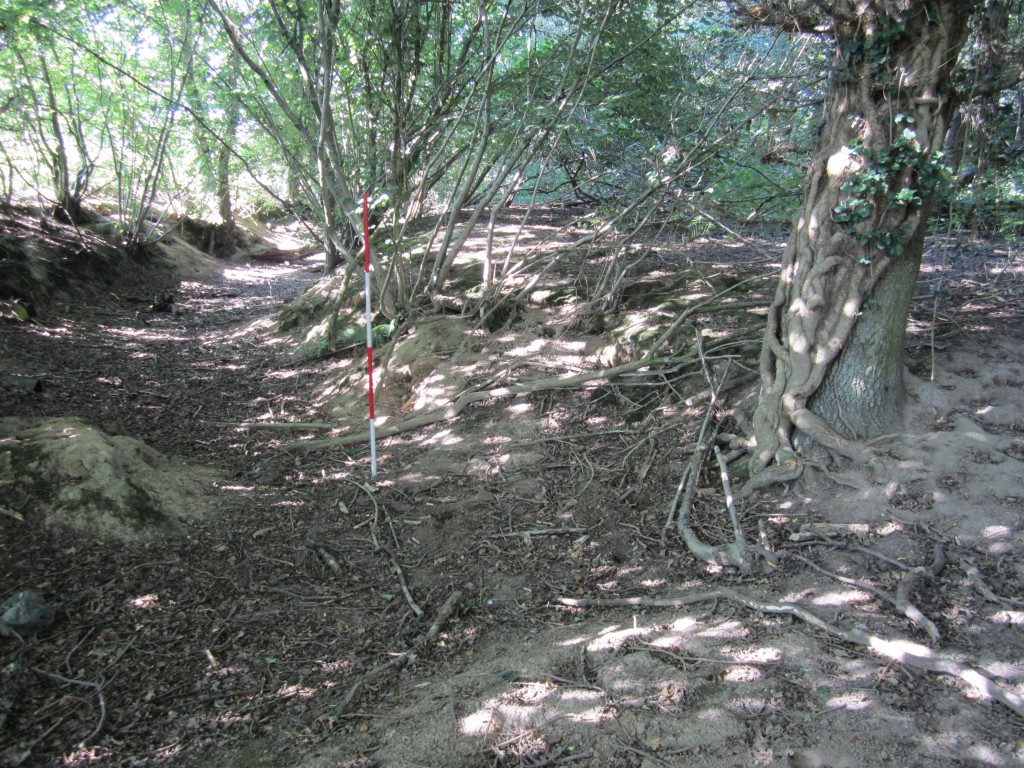Other Moated Sites

Homestead Moat about 1 km directly north of Bodiam Castle
While Bodiam, Scotney, and Ightham are perhaps the most impressive medieval moated sites in southeast England, they are certainly not alone. Somewhere between two and three hundred other lesser-known moated sites dot the counties of Kent, East and West Sussex, and Surrey. Today, the vast majority of these are little more than a ditch surrounding an inner island, but others, like La Mote near the village of Iden, are equally as impressive as Scotney or Bodiam in terms of their archaeological footprint, but they rarely contain standing structures today. In the Weald, most moated sties are concentrated in lowland areas and dug in clay deposits; clay is more impermeable to water than the chalk-land to the north, making it easier to contain and control water in the landscape and drain excess rainwater. Although the majority of moats in England have not been excavated, the general trend of moat-building dates to the 13th and 14th centuries.
While some scholars argue that moats were built primarily for defensive purposes, many archaeologists believe that these lower-status households were mirroring their higher-status neighbors in a form of social emulation. Moving beyond this debate, current research in the Weald is focused on how these landscape features were experienced by different classes in medieval society and how this experience reinforced the social realities of medieval life.

This map shows a correlation between moated sites and lowland areas in southeastern England (map by Eric Johnson).
Eric Johnson’s research on moated sites in the Wealden landscape can be found in Chapter 10 of our volume, and also here: http://www.tandfonline.com/

Leave a Reply
You must be logged in to post a comment.